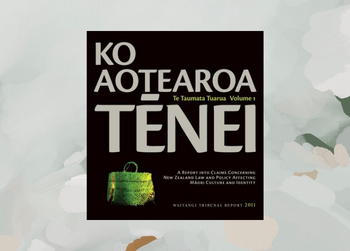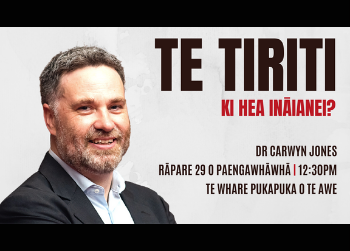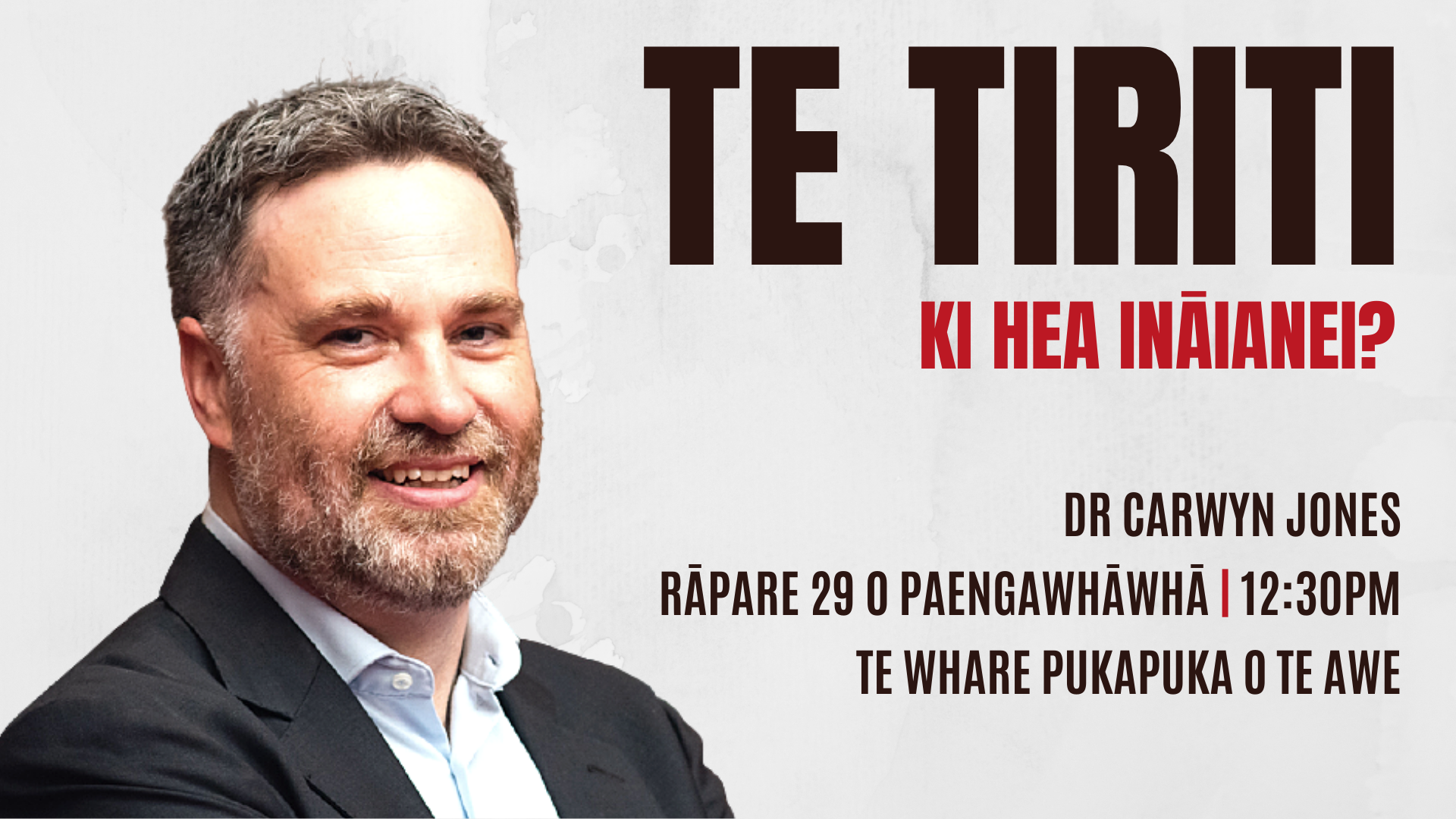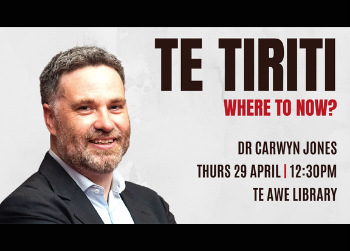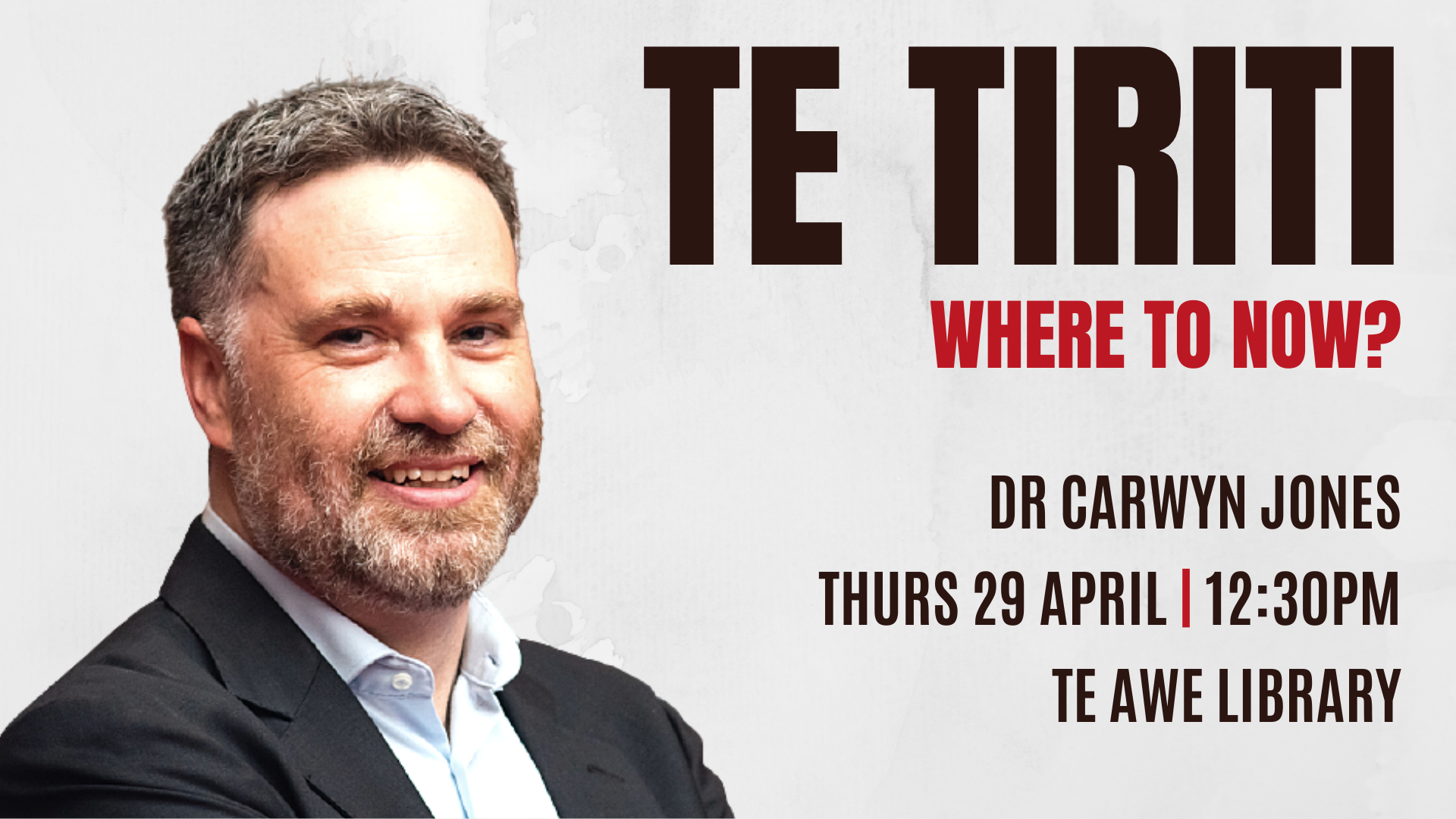I runga anō i ngā tohutohu a Māmari Stephens i roto i tana tuhinga “He rangi tā Matawhāiti, he rangi tā Matawhānui”, kāore e tawhiti atu te whakanuitanga 200 tau o waitohutanga o Te Tiriti o Waitangi. Engari ka pēhea ianei te āhua o Aotearoa hei ngā 20 tau e tū mai nei? Ā, ka whakawā pēhea nei ngā tumu kōrero i te tau 2040 i ngā whanaketanga o ngā tekau tau ruarua ka hipa?
Ko tētahi tangata e taea ana pea e ia te whakautu i ēnei pātai ko Tākuta Carwyn Jones (Ngāti Kahungunu). He Ahorangi Tāpiri a Tākuta Jones i Te Kauhanganui Tātai Ture i Te Whare Wānanga o Te Herenga Waka, ā, ko ia hoki te kaituhi o New Treaty, New Tradition – Reconciling New Zealand and Māori Law and co-editor of Indigenous Peoples and the State: International Perspectives on the Treaty of Watangi. Ko ia hoki te perēhitini-ngātahi o Te Hunga Rōia Māori o Aotearoa, me te ētita-ngātahi o te Māori Law Review me AlterNative – an International Journal of Indigenous Peoples.
E whai wāhi ana hoki a Tākuta Jones ki tētahi atu kaupapa whakahirahira. E rua marama ki muri ka hono atu ia ki te ohu Adaptive Governance me te Policy i te BioHeritage Challenge, Ngā Koiora Tuku Iho, hei kaihautū-ngātahi me Tākuta Maria Bargh. He tūranga whakahirahira tēnei: ki te whakatau me pēhea e taea ai e ngā panonitanga ki te kāwanatanga me te ture i Aotearoa te āwhina ki te whakaora i te taiao o te motu – i mua o te hokinga kore ki muri.
Ki te rapu i ētahi atu kōrero, pānuitia tā mātou uiui ki a Tākuta Carwyn Jones i raro!
E kōrero ana te pae tukutuku a te Adaptive Governance me te Policy (AGP) mō tētahi mataaho āheinga e whakaratoa ana e te whanaketanga o tētahi Rautaki Koiora ā-motu, tae atu hoki ki te WAI 262. Ka taea e koe te whakamārama i te hiranga nui o WAI 262 me te Rautaki Koiora?
E whakarato ana te Rautaki Koiora i tētahi anga whakahaere matua mō te whanake i ngā mahere koiora ā-takiwā, ā-rohe hoki puta noa i ngā tau 30 e tū mai nei i Aotearoa. E whakarato ana hoki i tētahi moemoeā whaitake me te whakarite i tētahi māramatanga whānui o te wāhi hei whāinga mā tātou hei iwi, ki te tiaki me te hiki i te koioratanga.
Ko te pūrongo WAI 262, Ko Aotearoa Tēnei, me te urutau a te kāwanatanga whānui e whanake mai ana, e whakatau haere ana hoki i ēnei momo take (me ētahi atu), me te arotahi atu ki te whakaurunga a te Māori me te tūranga o te mātauranga Māori. Ka whakauru hāngai tonu te Rautaki Koiora me Wai 262 ki ngā pātai o te kāwanatanga taiao me te kaupapa here e pā ana ki te tuku ihotanga koiora o Aotearoa.
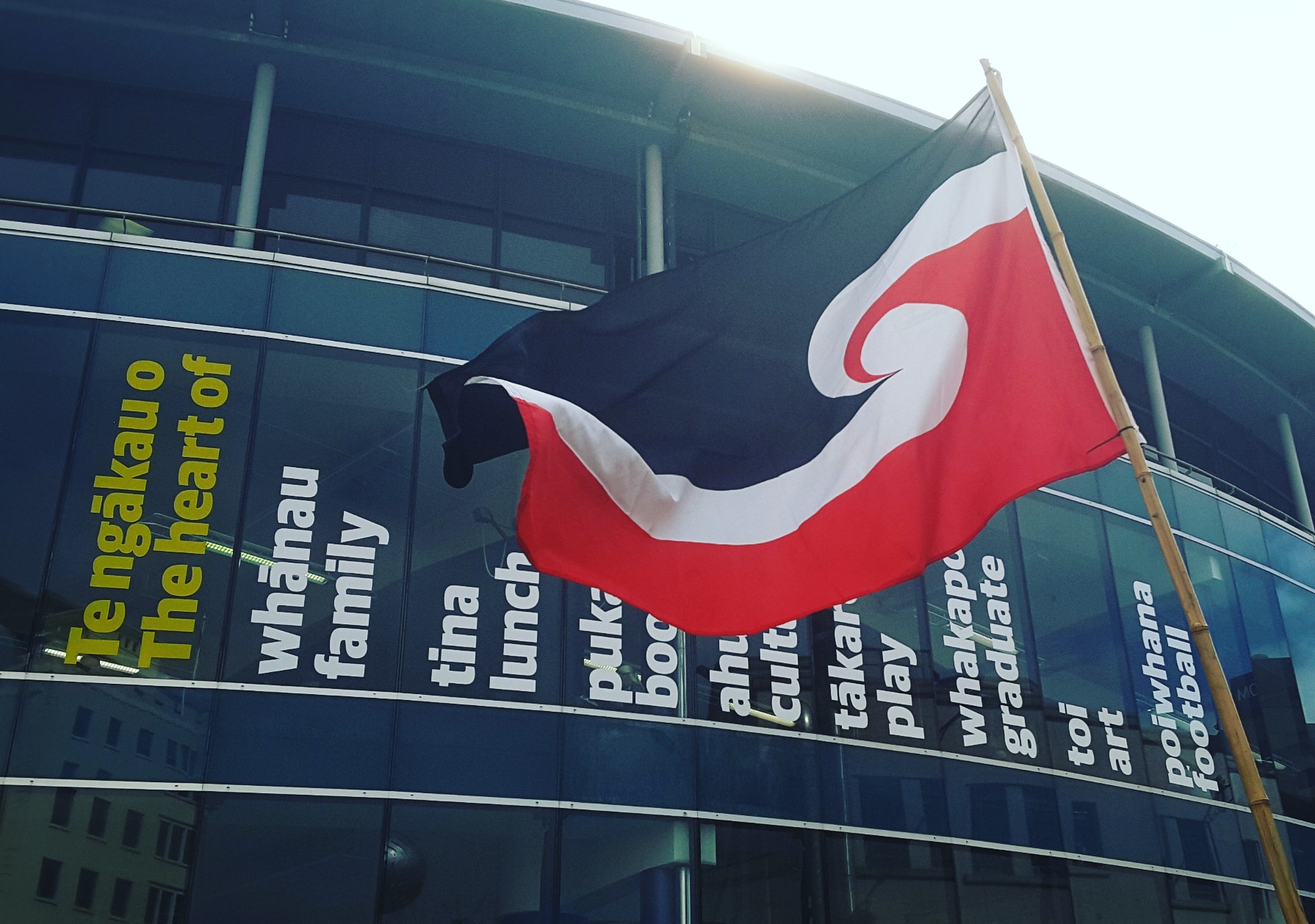
Me pēhea a Te Mana o te Taiao – te Rautaki Koiora o Aotearoa e whai whakaaro ai ki te pūrongo WAI 262 a Te Rōpū Whakamana i te Tiriti o Waitangi?
Ko tētahi o ngā āhuatanga matua o te pūrongo WAI 262 ko te miramira i ngā hapori Māori tae atu ki ngā iwi, hapū me ngā whānau, me tā rātou mahi ki te whakatakoto i ō rātou wawata mō te whakahaere i te hononga a te tangata ki te taiao, me te whai i ngā tikanga pūataata e haepapa ai ngā kāwanatanga ā-rohe, kāwanatanga matua hoki ki te whakauru atu ki aua wawata. E āta mohimohi ana te pūrongo ki te kī ko tā te whāinga ā-Tiriti me rapu ki te whakamana i ngā hapori Māori i te tuatahi ki te whakatau take ka pāpā atu ki ō rātou taonga (tae atu ki ngā āhuatanga o te taiao), ā, i ngā wāhi e hiahiatia ana ētahi tauira whakahoa, me whakauru te Māori ki ngā whakataunga take, kaua ko te tū hei kaitohutohu anake i te kaiwhakatau. Ko tētahi o ngā putanga whaikī o Te Mana o te Taiao, ko te whakatinanatanga e ngā hoa Tiriti, whānau, hapū me ngā iwi ngā tūranga matua hei kaitiaki.
Ko tētahi atu mahi o nāianei a te AGP ko te whanake-ngātahi i ngā tikanga ā-ture e “whai reo ai te taiao”. He aha ētahi whai wāhitanga?
Ko ētahi o ngā momo tauira ka whai wāhi pea i konei ko ngā mea pēnei i te whakamana i te whakatangata ā-ture ake o ngā āhuatanga horanuku, pērā i tērā i kitea ake mō Te Urewera (he papa ā-motu i mua) me Te Awa Tupua ( ko te awa o Whanganui i mua).
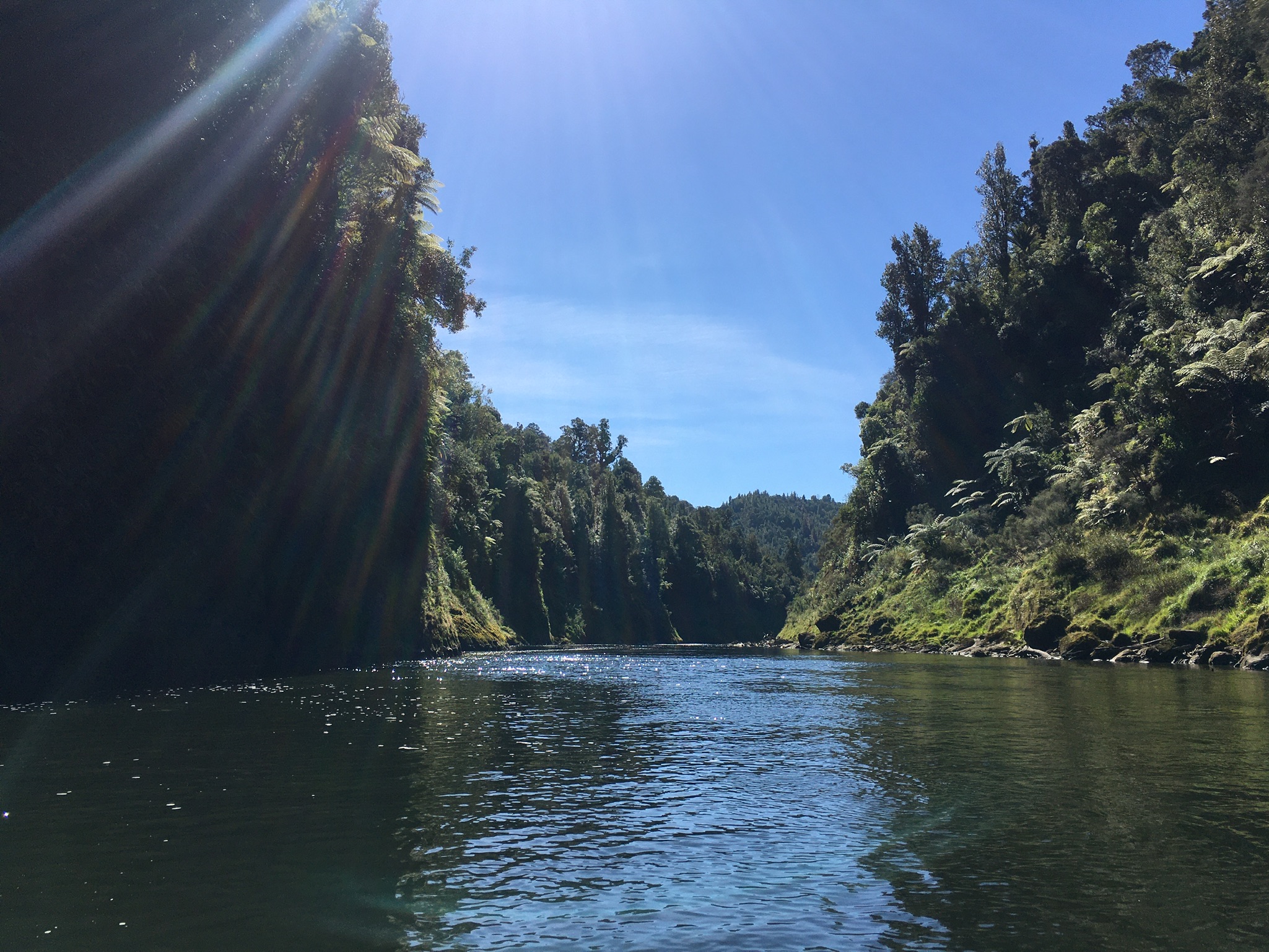
He whai tikanga nui te whakaaro o ngā tauira kāwanatanga rerekē. He tauira āu e hoahoa-ngātahitia ana e koe i tēnei wā, ā, kua whakamātauria?
He whānui tonu ngā āhuatanga e whai wāhi atu ana ki ngā tauira kāwanatanga rerekē. E tūhuratia ana e mātou ngā whakaaro mai i Te Ao Māori mō te whakarite i ngā hononga ki te tangata, ina koa, a te tangata ki te taiao. E whai ana mātou ki te arotake i ētahi o ngā tauira o nāianei mō te kāwanatanga-ngātahi kua whanaketia mā te tukanga whakatau take Tiriti me ētahi atu horopaki, ā, kua whakaritea e mātou tētahi pūrongo o ngā taputapu pūtea kua hoahoatia hei tautoko i te koioratanga me te whakapoapoa i ētahi tauira rerekē o te kāwanatanga.
He aha ō matapae mō te whakatinanatanga o ēnei tauira kāwanatanga i te anamata?
Me āta aro te whakatinanatanga ki te horopaki ā-takiwā, te taiao ā-takiwā, me ngā hononga ā-takiwā. Ko tētahi āhuatanga ka whaitake nui pea i roto i te whakatinanatanga ko te whakamana i ngā hapori ā-takiwā ki te whakatinana i tā rātou tūranga hei kaitiaki.
I a tātou e titiro ana ki ētahi tauira kāwanatanga rerekē me ngā tikanga ā-ture mō Aotearoa, tērā anō ētahi tauira o tāwāhi e pīata mai ana, e whai take ana?
Ehara i te mea kei Aotearoa anake ēnei take, nō reira he nui ngā mahi puta noa i te ao e whakauru atu ana ki tēnei tūmomo wāhi ōrite. I Aotearoa nei, kua waia tātou ki te whakapūnga o ngā whakaritenga mana tūmatawhānui, engari i ngā pūnaha kotahitanga pēnei i Amerika, Kanata, ā, tae atu pea ki Ahitereiria, e hāneanea ana ki a rātou te whakaaro o ngā ao rerekē o te mana whakahare me te horahora i ngā whakataunga take. Nā tēnei ka hua mai pea ētahi wāhi mō ngā tauira kanorau, kāwanatanga ā-takiwā hoki.
Ki ōu whakaako ka pēhea te whai o ēnei tauira me ēnei kaupapa here i ngā raru nui pēnei i te urutā KOWHEORI-19 o te wā nei?
Ka urutau pai pea ki te kanorau o ngā matea ka hua mai i tēnei momo raru nui. I te mea hoki ki te whakamanahia ngā hapori ā-takiwā, ka whai rātou i ngā mahi e hāngai ana ki ō rātou āhuatanga ake, te tiaki i ngā tāngata – arā i kitea tēnei i ngā wāhi arowhai ā-hapori i whakaritea e ētahi rōpū Māori, ā-iwi hoki, ā, i whakahaeretia i te wā e taumaha ana te urutā i Aotearoa.


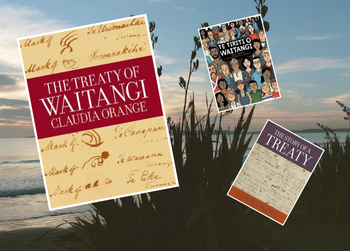
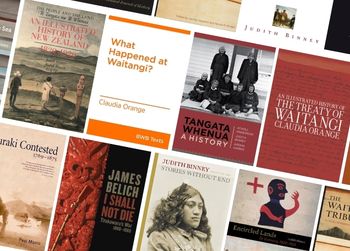

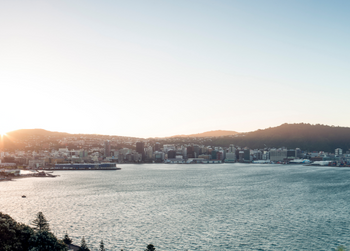
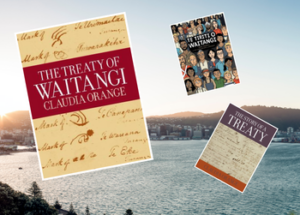 Here in Wellington we’re far away from Waitangi where the official Waitangi Day commemorations happen every year. But did you know that we’re lucky enough to be able to visit the Treaty itself locally at the
Here in Wellington we’re far away from Waitangi where the official Waitangi Day commemorations happen every year. But did you know that we’re lucky enough to be able to visit the Treaty itself locally at the 